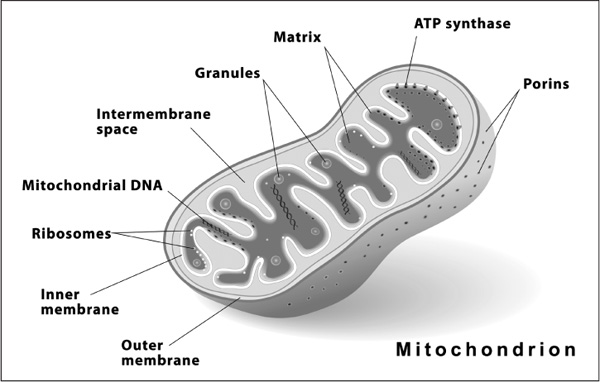Cellular BasicsStructures Inside Cells |
What are mitochondria? |
In 1857, Swiss histologist and embryologist Rudolf Albert von Kölliker (1817–1905) first described “sarcosomes” (now called mitochondria) in muscle cells. The word mitochondrion (derived from Greek for “threadlike granule”) was first used in 1898; by 1948, the first functionally active mitochondria were isolated. Today we know that a mitochondrion (singular) is a self-replicating, double-membrane body found in the cytoplasm of all eukaryotic cells. The outer membrane of a mitochondrion is smooth, while the inner membrane is folded into numerous layers that are called cristae. Mitochondria are responsible for much of the metabolism necessary in protein synthesis and for the production of both ATP and lipids. (For more about ATP, see the chapter “Basics of Biology.”)

Mitochondria are essential parts of eukaryotic cells. They produce lipids and ATP and are necessary for protein synthesis.
